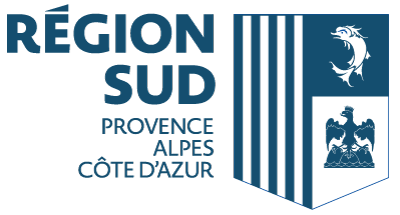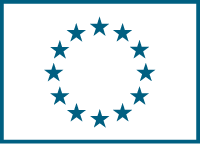9 projets européens trouvés
Recherche sur 125080 projets européens
TERMINÉ
El hermano de Cain
Date du début: 25 juin 2014, Date de fin: 24 déc. 2014,
... European citizenship will be promoted through the values of multiculturalism and the activity of civil society in defense of environmental values . The Foundation for the Conservation of the Bearded Vulture will guide them on this journey of knowledge, thanks to the experts. The working methods and the learning methodology will be informal , participatory and experiential, but structured in a pro ...
Voir le projet
2
Participants partenaires
TERMINÉ
Urgent measures to secure survival of the Egyptian vulture (Neophron percnopterus) in Bulgaria and Greece (Return of the Neophron)
Date du début: 1 oct. 2011, Date de fin: 31 déc. 2016,
Background
In 2002, an action plan for the ârecovery and conservation of vultures on the Balkan Peninsula and adjacent regionsâ was drafted, as a joint effort of national and international NGOs. The plan is promoted by the Vulture Conservation Foundation and the Frankfurt Zoological Society; and is supported by, among others, by BirdLife International ...
Voir le projet
4
Participants partenaires
TERMINÉ
Habitat Management and Raptor Conservation in Nestos Delta and Gorge (Nestos)
Date du début: 1 juil. 2002, Date de fin: 31 déc. 2006,
... a deltaic system with freshwater lakes and ponds forming the Nestos delta. The river also traverses a unique gorge towards the end of its course, which is home to many raptors, including the Griffon vulture (Gyps fulvus).
The delta comprises extensive sand dunes, residual riparian forest, lagoons, water meadows and other important habitats for birds and various mammals such as the otter and the ...
Voir le projet
7
Participants partenaires
TERMINÉ
Coordinated Efforts for International Species Recovery (EuroSAP)
Date du début: 1 avr. 2015, Date de fin: 30 sept. 2018,
...ion and update of six existing SAPs and EU management plans endorsed by the European Commission in the late 1990s and early 2000s (white-headed duck, velvet scoter, Dalmatian pelican, cinereous vulture, bearded vulture and European turtle-dove), and to develop two new plans for species of greatest urgency (Yelkouan shearwater and Monteiroâs storm petrel). The project will also develop a pilot gr ...
Voir le projet
10
Participants partenairesVulture Conservation Foundation
TERMINÉ
Bright Future for Black Vulture in Bulgaria (Vultures back to LIFE)
Date du début: 16 juil. 2015, Date de fin: 15 juil. 2022,
Background
The most serious problem for vultures in Bulgaria today is the critically low number of populations and their isolation. In spite of two decades of conservation efforts, the WWF Greece Dadia project showed that the number of breeding pairs is not increasing and remains around 20 pairs. Another threat is unsuitable livestock breeding practices r ...
Voir le projet
5
Participants partenairesVulture Conservation Foundation
TERMINÉ
Restoration of connections between the Alpine and Pyrenean populations of bearded vulture (Gypaetus barbatus) (LIFE GYPCONNECT)
Date du début: 1 sept. 2015, Date de fin: 30 nov. 2021,
Background
The conservation status of the bearded vulture (Gypaetus barbatus) is listed as vulnerable on the European IUCN Red List and endangered in France. Before vulture reintroductions started, the Alps represented a huge barrier separating the Pyreneo-Iberian populations and those of the Balkans. To bridge the distance between the populations of the ...
Voir le projet
9
Participants partenairesVulture Conservation Foundation
TERMINÉ
Conservation of Black and Griffon vultures in the cross-border Rhodopes mountains (LIFE RE-Vultures)
Date du début: 1 janv. 2016, Date de fin: 30 juin 2021,
Background
European black vultures (Aegypius monachus)and griffon vultures (Gyps fulvus) are considered as umbrella species whose conservation will also substantially benefit other raptor species sharing the main diet of carrion as well as breeding and foraging habitats. These species are also an indicator of healthy, intact, natural habitats. The conserv ...
Voir le projet
6
Participants partenairesVulture Conservation Foundation
TERMINÉ
Egyptian Vulture and Bonelliâs Eagle Conservation in Douro/Duero Canyon (LIFE Rupis)
Date du début: 16 juil. 2015, Date de fin: 15 juil. 2019,
Background
Douro Internacional e Vale do Ãgueda SPA and Arribes del Duero SPA form one of the main areas for Egyptian vulture (Neophron percnopterus), Bonelli´s eagle (Aquila fasciata) and red kite (Milvus milvus) in the Iberian Peninsula. For the Egyptian vulture, the local population represents 10% of the total population of the peninsula. For Portuga ...
Voir le projet
9
Participants partenairesVulture Conservation Foundation
TERMINÉ
Reduction of the human threats affecting the Bearded Vulture (LIFE GypHelp)
Date du début: 1 juin 2014, Date de fin: 31 déc. 2018,
Background
The bearded vulture is one of the most threatened species in Europe and is, as such, rated âcritically endangeredâ by the IUCN. Reintroduced into the Alps in 1986, the species suffers from population fragmentation and resulting genetic isolation. In 2011, only 50 breeding pairs were left in France and 175 in Europe. Thanks to recent reintro ...
Voir le projet
6
Participants partenairesVulture Conservation Foundation



